A new, and dangerous, kind of distracted driver
They hog lanes, ignore emergency vehicles, and treat their cars like multi-tasking way stations. That culture of entitlement makes drivers a new kind of menace.
Distracted mom drives minivan (William Howard/Getty Images)
Share
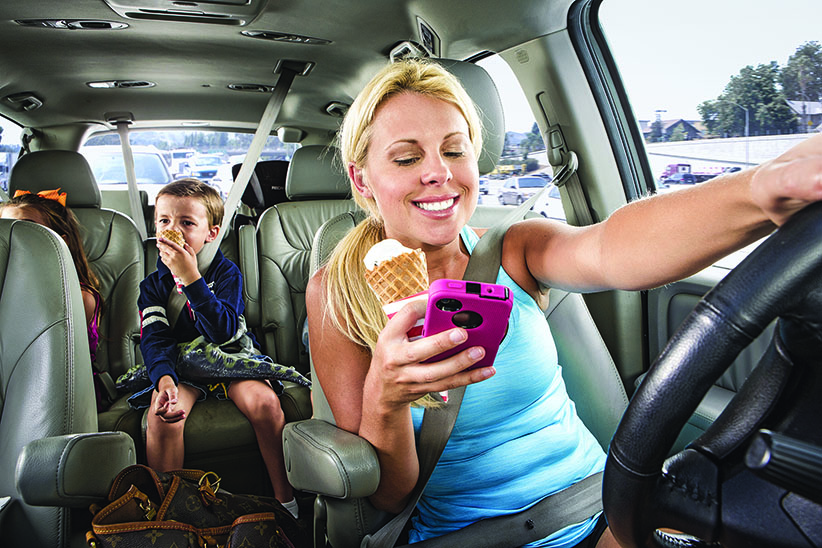
Working in traffic enforcement for a quarter of a century has exposed RCMP Cpl. Chris Little to bad driving in all of its manifestations. Recently, though, he’s noticed a concerning, and deadly, trend: the self-preoccupied driver in a steel-and-glass bubble, oblivious to the outside world. The telltale texter (head down, stopped on a green light) is the least of it. Little, an officer with Strathcona Traffic Services in Strathcona County, Alta., has pulled over drivers brushing their teeth, applying makeup, even reading a novel. “A 300-page book, balanced on the steering wheel,” he says. Car-as-mobile-kitchen is another theme: he pulled over one man eating a bowl of cereal while trying to drive with his knees; another man was eating waffles from a plate with a knife and fork. Then there was the solo female driver taking driver distraction to a new level: “A call came in that a vehicle was driving erratically,” Little says. When I pulled her over, her clothing was around her knees and she was flushed. You get the picture.” She was charged with careless driving.
It’s a roadscape familiar to Angelo DiCicco, general manager of Young Drivers of Canada (GTA). A driving instructor for three decades, DiCicco is also director of operations at Young Drivers’ new five-acre advanced driving centre in Markham, Ont., which offers rehab for drivers involved in serious crashes and also focuses on the perils of distracted driving, or, as DiCicco puts it, “to prove to people that multi-tasking is a lie.” People are far more stupid than they think, he says: “Just having your eyes open isn’t enough to see a dangerous situation; your brain has to be engaged.”
The fact that distracted driving now accounts for more fatal car accidents than impaired driving hasn’t made a dent in driving habits, says DiCicco, who sees the rise of “assertive” and now “aggressive” driving over the past 15 years as equally narcissistic and dangerous. It’s not unusual for impatient drivers behind a nervous novice trying to turn left to pull ahead and cut the new driver off, he reports.
Such “me-first” behaviour—disregard for traffic signs, failing to signal, lane-hogging, crowding intersections, sailing through red lights—has led to a culture of driving entitlement squarely at odds with the spirit of co-operation needed to navigate the impromptu societies that occur when motor vehicles share space. That has made driving, the most dangerous and behaviourally complex activity most people engage in on a daily basis, a cultural menace that affects not only drivers but pedestrians and neighbourhoods as the spillover effects puts cyclists on sidewalks and pedestrians at peril.
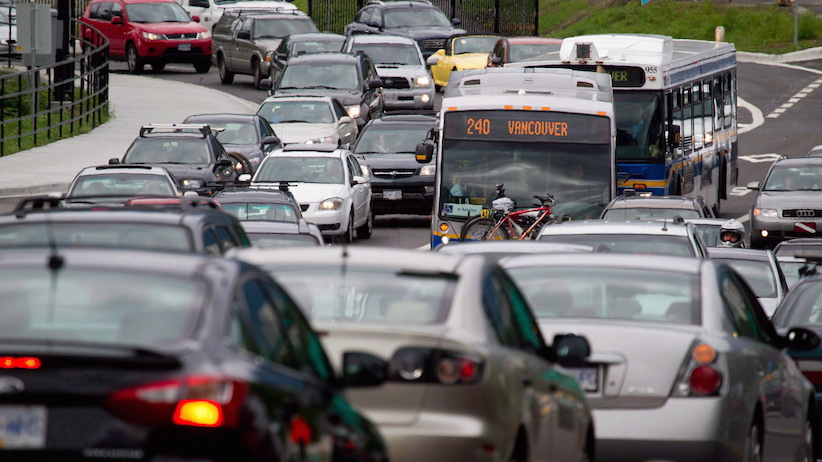
Some solace for drivers can be taken from Transport Canada statistics that reveal a decrease in deaths from automobile accidents over the past decade, in good part due to improvements in car design that reduce the impact of rear-end collisions. But it has never been a more dangerous time to be a pedestrian, bicyclist or motorcyclist; for them, deaths from automotive collision have risen in the same period. Even standing on the sidewalk isn’t safe; last year, four people were taken to hospital when a car plowed into a bus station in a Toronto suburb.
Aggressive, thoughtless driving is not new, says psychologist Leon James, a pioneer in the field of “driver psychology.” References to “road rage” date to ancient Rome, which had a law against “furious driving,” the University of Hawaii professor says. Comparison between North American driving habits and an empire in decline are appropriate. As James sees it, the rise of a selfish roadway culture is not only dangerous but culturally corrosive: “It’s anti-social, even immoral to expose others to risk.”
The evidence is plentiful. Consider Sheryl Sandberg’s widely circulated Facebook post written last year after her husband died of a heart attack; the Facebook COO recounts the “unbearably slow” trip to the hospital in an ambulance because drivers refused to get out of the way. She implored drivers to do what is both legally and morally required: yield way to emergency vehicles. Cars blocking emergency vehicles is a huge problem on Canadian roads as well, says Little. “And it’s getting worse.”
No tale illustrates the spirit of driver entitlement better than that of Jourdan Bancroft, a 25-year-old woman pulled over at 8:20 p.m. on an Ontario highway last July for driving 150 km/h in an 80 km/h zone; she was charged with road racing. Her explanation for putting her life and others at risk? She told the arresting officer she wanted to get to her cottage to “see the sunset.” The story elicited outrage. But in a small way, every driver could relate.
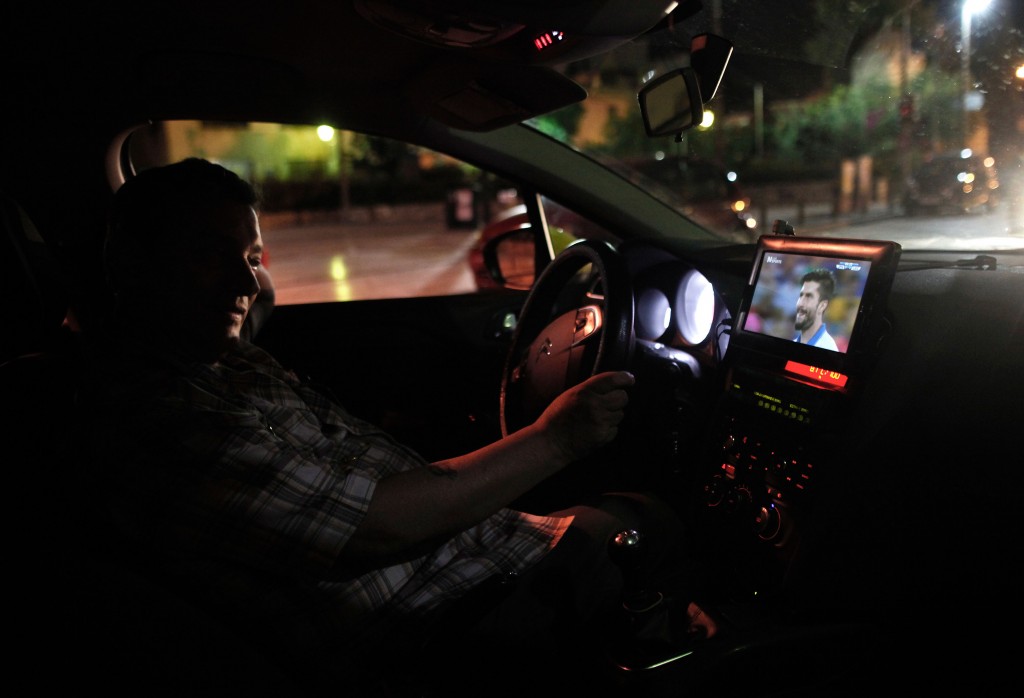
How we behave on roads is culturally determined, says James—a confluence of technology, economics, sociology and psychology. A major factor is car design itself, specifically “improvements,” even at the low end, that make cars feel like safe, screen-filled, multi-tasking way stations, a place to text, chat on the phone, eat, even be entertained; in late December, Ontario Provincial Police stopped a man driving over 160 km/h on Highway 401 near Brockville, Ont., watching a movie on a screen taped to his dashboard. He was charged with distracted driving and stunt driving.
One telling casualty is the stick shift, a driving feature requiring hands-on focus. Only nine per cent of cars sold in Canada have manual transmissions, down from 35 per cent in 1980, according to IHS Automotive. Only 3.6 per cent of new car buyers in Canada request it. The new logic is laid out in a much-circulated 2013 video, an audition for a Canadian reality TV show, featuring a candid Dawn Muzzo: “I had a six-speed Porsche but I couldn’t wear my heels, have a cigarette, and drink my coffee whilst shifting,” she says. “So it had to be traded in for an automatic.” (Our ability to drive and multi-task is less than we think, according to a 2015 AAA Foundation for Traffic Safety report that found a phone conversation via hands-free or Bluetooth, which is legal, is mentally demanding and associated with moderate to high levels of cognitive distraction.)
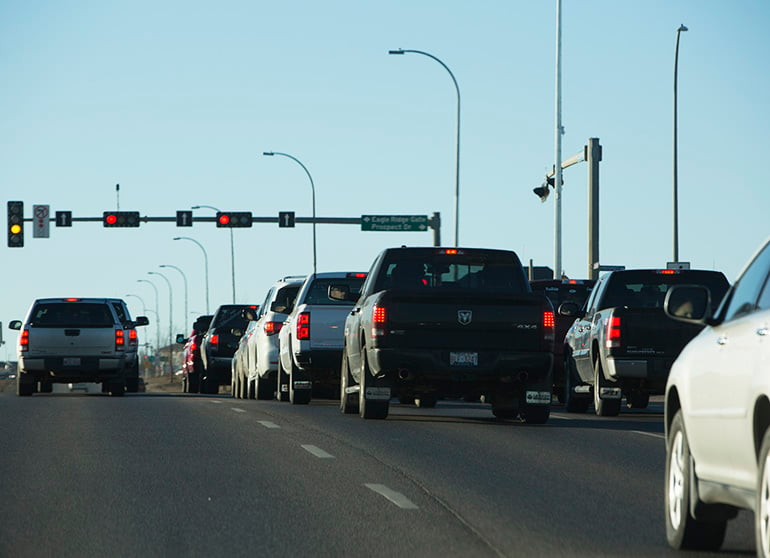
No vehicle better symbolizes the altered road dynamics than the SUV; the behemoths’ popularity has given rise to an “if-you-can’t-beat-them-join-them” mentality. Even James, whose research in the early 2000s found female SUV drivers far more aggressive than male SUV drivers, drives one. His wife convinced him, he says. “Women drive them because they feel safer, protected,” he says. “They’re higher up.”
But research also reveals that the aura of safety and impenetrability created by driving an SUV or light truck can foster what Reuben Aitchison of the Australian Automobile Manufacturing Industry calls an “illusion of superiority . . . that leads them to believe they should be getting somewhere faster than everybody else.” That can lead the SUV driver to take risks that the Smart car driver does not.
The fact almost two-thirds of SUV drivers are women aged 25 to 49 and men aged 50 or older has reframed the stereotype of road menace: it’s not the male teenager in a souped-up muscle car that poses risk, but the middle-aged woman in a black SUV. Last October, four-year-old Arisa Ahmed was killed and her seven-year old sister seriously injured while crossing the street in front of their school in Markham, Ont., as their mother watched; they were struck by a black Mercedes SUV driven by a 39-year-old woman, who was later charged with dangerous operation of a motor vehicle causing death and dangerous operation of a motor vehicle causing injury.
Perceived time crunch has added to road stress. DiCicco routinely hears stories from people who have had licences pulled or were involved in serious crashes. “Women say, “I had to pick up the kids; daycare charges by the minute,’ ” he says. Men are more likely to be ferrying kids from school to practice with dinner at a drive-through in between. Soaring housing prices have also fed frustration, says DiCicco, by pushing many buyers outside of city cores, which increases commute times.
DiCicco sees three distinct driver personalities: the “adult”’ who understands that everyone wants to get home and that one crash could mean hundreds of people are late; the “child” (unrelated to actual age), subject to peer pressure who engages in “my car is faster than your car” behaviour without thinking through consequences; and the “domineering parent” who wants to teach someone a lesson by tailgaiting, giving the finger or blocking a car trying to pass on a shoulder. “There are very few homicidal maniacs out to kill you. And very few people are suicidal in the car,” he says. “To be involved in a crash you have to not do a lot of things.”
He wants drivers to learn what he calls “traffic emotions management” and to see “good driving” redefined: “It isn’t just vehicle dynamics—lane change, parking, motor skills. It’s mastering the psychology of driving, of realizing more drivers are taking up a finite amount of space and you need to look out for your neighbour and keep space for the other driver who makes a mistake; then you can graciously allow them the space in front of you or move up quickly so they don’t rear-end you.” James agrees. “Being a good driver isn’t just, ‘How many accidents did you cause?’ ” he says. “It should be: ‘How many people have you blown off? How many people have you insulted?’ That should be the measure.”
Without a seismic change in driver attitudes, the situation will only worsen, says James: “Every generation is going to be more aggressive, more competitive and more selfish, taking risks and putting people at risk.”
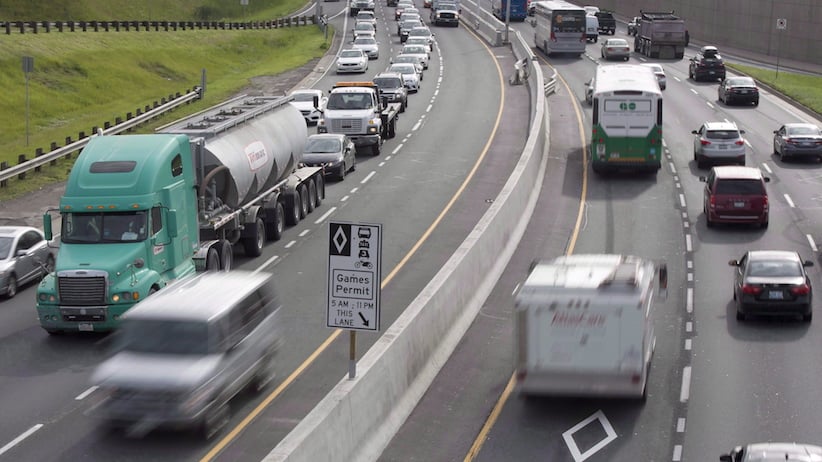
Rising awareness of distracted-driving risks has led to an increase in penalties, which vary wildly across Canada—from $115-$145 in Quebec to $300 to $1,000 in Ontario. (Nunavut is the only region with no distracted driving penalty). This year, Alberta raised its fine to $250 plus three demerit points. Those enforcing the law say it’s not enough to act as a deterrent and that courts fail to recognize the severity of the crime. The woman charged with “road racing” 70 km over the speed limit to “see the sunset,” for example, received a reduced charge of “speeding”; she paid $812.50 and got six demerit points.
“We’re fighting a losing battle,” says Little, who believes Canada doesn’t take driving offences seriously. “We understand first-degree murder and gang violence. But driving infractions? We’re too warm and fuzzy. We can’t suspend a licence for life. People think driving is a right, but it’s a privilege.”
The call to attach the same stigma now associated with impaired driving to distracted or entitled driving is gaining traction. Pioneering activists exist, including the family of Josh Field, a 17-year-old driver killed in London, Ont., in 2009 when he took his eyes off the road to answer his phone. The Field family recently teamed with #DriveToStayAlive, an initiative launched by 17-year-old professional racecar driver Parker Thompson to teach high school students about the life-changing consequences of texting or talking on a cellphone while driving. “It’s far easier to teach youth,” says Sgt. Wade Davidson, who works in traffic services for the Lethbridge police force. “The group hard to reach is adult drivers who have been doing things the same way for years; they set the example for their kids.”
Frustrations are also evident on a rash of driver-shaming websites and YouTube “Bad Driver” channels, which has created a market for dashcams not only to record bad drivers but damage to a vehicle in a hit-and-run when it’s parked. Their presence has a self-monitoring effect, says Alex Jang, the Vancouver-based founder of dashcam company BlackboxMyCar. “Studies show drivers with dashcams drive more responsibly because they know they’re being filmed.”
Reminders of roadside perils are now entrenched in urban landscapes, with poignant “ghost bike” memorials for cyclists as well as the “Slow Down, Kids at Play” signage organized in 2014 by residents of a Toronto neighbourhood after the death of seven-year-old Georgia Walsh, killed by a van rolling through a red light. Some 15,000 signs have been distributed from Victoria to Charlottetown, says organizer Meghan Sherwin: “Interest tends to be spurred by a recent child pedestrian death and/or frustration with the lack of traffic-calming measures.”
In a telling detail, many of the streets boasting the signs already have traffic-calming bumps. Also telling is the sentencing in the case. The driver, who pleaded guilty to careless driving, received a two-year driving prohibition, a $2,000 fine and 200 hours of community service. The judge explained he didn’t give jail time after seeing the depth of the man’s remorse, his reported psychological trauma and the forgiveness of the victim’s family. “This was an avoidable accident but an accident nevertheless,” he said. “His inattention was momentary.” Yet in that momentary inattention, a young life was gone.